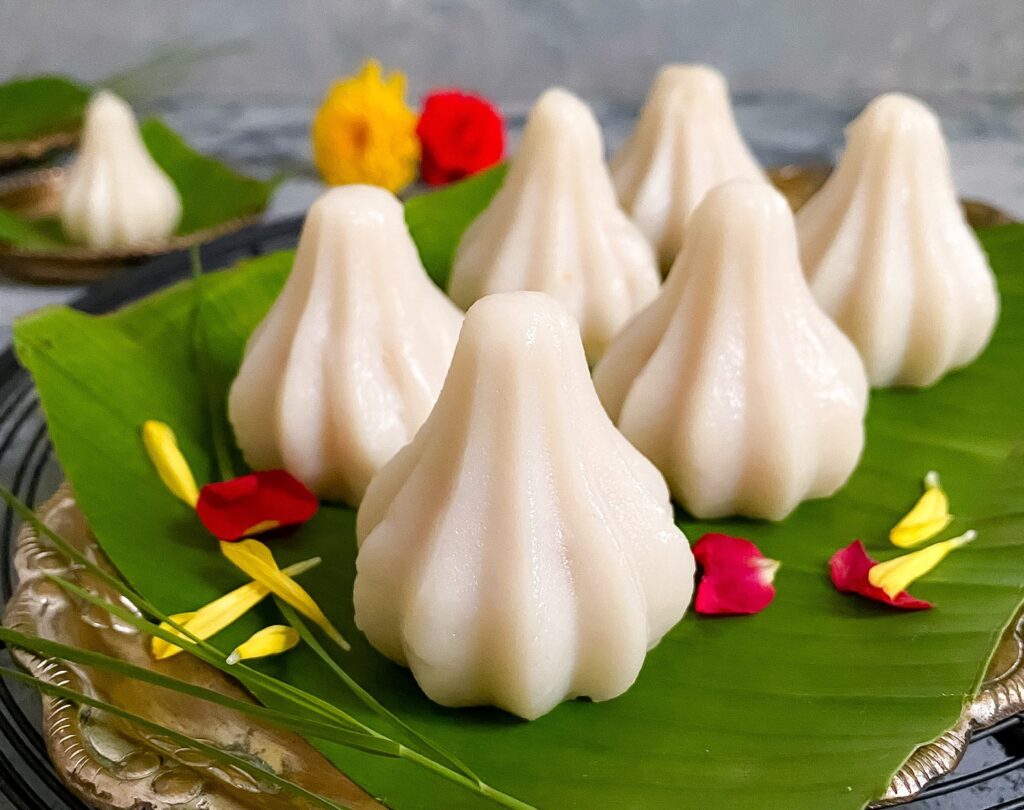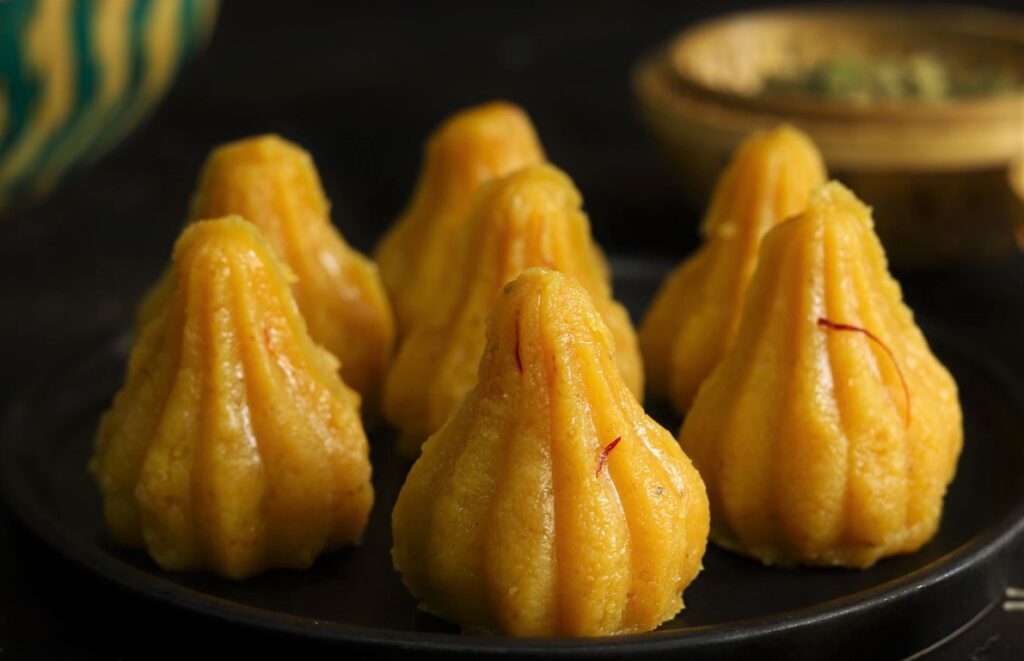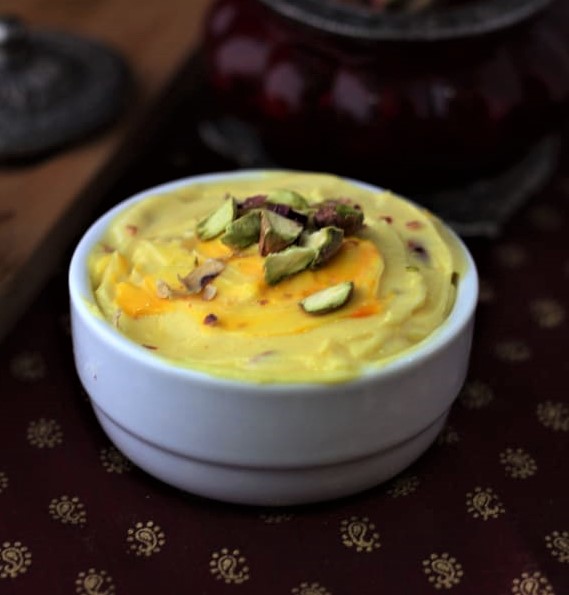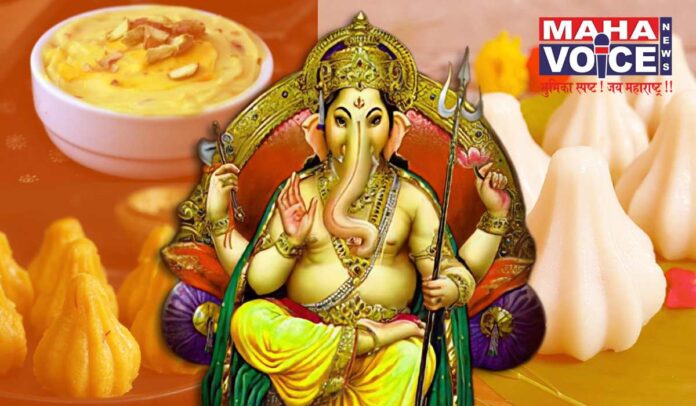By: Dr. Kaviraj Khialani- Celebrity Master Chef.
Ganesha, also spelled Ganesh, also called Ganapati, elephant-headed Hindu god of beginnings, who is traditionally worshipped before any major enterprise and is the patron of intellectuals, bankers and authors.
Ganesha is a remover of obstacles. Ganesha Chaturthi is the 10 day-long Hindu festival held on the birthday of the Lord Ganesha. He is the son of Shiva and Parvati. It is celebrated all over India.
The festival is held on Shukla Chaturthi in the Hindu month of Bhadrapada and ends on Ananta Chaturdashi. The First Ganesh Chaturthi Celebration Dates Back to The Era of Chhatrapati Shivaji Maharaj.
In 1893, the Indian freedom fighter Lokmanya Tilak praised the celebration of Sarvajanik Ganesh Utsav in his newspaper, Kesari, and dedicated his efforts to launch the annual domestic festival into a large, well-organised public event.
The favourite colours of Lord Ganesha are green and yellow. This is why Lord Ganesha loves the marigold flowers because of the pure yellow colour that these flowers have. All of Ganesha’s favourite things must be offered to him during Ganesh Chaturthi whenever he
is worshipped by his devotees.
Modak is Lord Ganesha’s most favorite food. Traditionally, modak has sweet stuffing made from coconut and jaggery. Since Lord Ganesha loves modak, he is also called Modaka priyaya, one of his 108 names. Bael Fruit or Wood Apple is a rich source of vitamins, calcium, tannin, phosphorous, fibre, protein and iron. The fruit occupies a significant place in Ayurveda for its huge medicinal benefits and helps in treating disorders related to all three.
Here are a few recipes to offer to Lord Ganesha this festive season and seek his blessings:
Recipe-1] Steamed Modak

For the modak covering:
- Rice flour- 1 cup
- Water- 1 and ¼ cup
- Ghee-1/2 tbsp.
- Salt-1/4 tsp
For the filling:
- Coconut-1 cup freshly grated
- Jaggery-1/2 cup grated
- Green cardamom powder-1/4 tsp
- Poppy seeds-1 tsp
- Raisins-2 tbsp. chopped
- Cashews-2 tbsp. chopped
Method:
For the Stuffing: Take grated coconut and jaggery in a pan on medium heat. Cook till it becomes thick and most of the moisture evaporates. It takes around 6-7 minutes. The cooking time depends on how much moisture your coconut and jaggery has. So keep an eye on it. Now add poppy seeds, cashews, raisins and cardamom powder. Mix and cook a minute. Turn off the stove, remove the stuffing to a plate and let it cool down.
For the Dough: Bring water to a boil and add ghee. Keep the heat on medium-low. Add rice flour and stir immediately to avoid lumps. It will come together like a dough Cover it with lid and Cook for 2-3 minutes. Do stir once or twice in between. Remove it to a plate and let it cool to touch. Once it is warm or cool enough to handle. Start kneading and if it feels hot, apply some water on your palm and continue kneading. Make the smooth and lump-free dough.
Shaping Method 1 (Using Modak Mould): Grease the inside of the mould using ghee. Take a small ball from the dough and add it into the mould. Press it tightly and make the hollow center using your fingers. Add the stuffing & lightly press it. Take little dough and seal the open part. Open and gently remove it and place it on the plate. Keep it covered with a clean kitchen towel while you shape the rest.
Shaping Method 2 (Using your hands): Grease your hand with ghee or just wet with water. take one ball on your palm. Now using your other hand, slightly press it to make the small disc. Now using two hands (thumbs and fingers), gently press it and keep shaping it to make about 3-4-inch diameter circle. In the center, add 2-3 teaspoons of stuffing. Now using your thumb and first finger, start pinching the little edges and make the pleats. I
made only 5 pleats only. Now carefully pinch it together and seal it.
Steaming The Modaks: While shaping, don’t forget to keep them covered to avoid drying. Prepare the steamer and let the water come to a boil. Meanwhile, Brush all the modak using water. Or alternately you can dip them in a glass of water. Prepare the steamer thali. Arrange the parchment paper or muslin cloth or banana leaf on the steamer thali. Arrange modaks on the thali. Steam them for 13-15 minutes on medium heat. Let it cool to touch. Meantime they will firm up. Now remove them and place them on the plate. Drizzle ghee or saffron-milk over ukadiche modak.
Recipe-2] MAVA MODAK

Ingredients:
- Mava-1 cup, grated
- Milk powder- 1 cup
- Condensed milk-3-4 tbsp.
- Ghee- 1 tbsp.
- Sugar-1 and a half cup
- Cardamom powder-1/2 tsp
- Pistachio, finely chopped- 2 tbsp.
- Rosewater-3 to 4 drops
- Milk-2-3 tsp
- Saffron- 4-5 strands
- Gold or silver edible leaf if desired for presentation
Method:
- Warm 2 tbsp. of milk, and soak a pinch of saffron, keeping some aside for garnish later. Keep aside. Please note that the saffron needs to be soaked for at least an hour. In case it has not been done, the Peda wouldn’t have the desired yellow/saffron color. Heat ghee in an in a vessel. Non-stick vessel is highly preferred. Keep the flame on medium throughout the cooking process. Add in the grated mava and stir.
- Make sure you constantly stir the cheese, such as it doesn’t stick to the vessel. Cook for about 20-25 minutes, or until the moisture evaporates. Add sugar. The quantity of sugar I have mentioned gives medium sweetness. If you want it more on the sweeter side, use more sugar, as desired.
- Ensure you are continuously stirring the ingredients. Add the condensed milk as well as milk powder and cook until the moisture starts leaving the sides of the vessel. Also, add the soaked saffron, along with the milk. This should take about 20 minutes. Do not overcook, or it might become dry. The mixture will become bit stiffer once it cools down. So make a judgement call as to when to stop cooking it further. Turn off the heat. Add cardamom powder and rose water, mix well.
- Let the mixture cool down a bit, and start making the pedas when you can handle the mixture with your bare palms. The way you make pedas is, apply ghee to your palms, and knead the mixture like a dough to make it really smooth. Use any modak mould to form it in modak shape, fill it in, press it and open the mould, and modaks are ready. Apply edible silver foil (optional) and chopped pistachios on top.
Recipe-3] KESARI SHRIKHAND

Ingredients:
- Curd- 1 kg, thick and full cream
- Powdered sugar- ½ cup
- Milk-1-2 tsp
- Green cardamom powder- ½ tsp
- Saffron- 6-8 strands
- Cashews- 2-3 tsp chopped
- Almonds-2-3 tsp chopped
- Raisins-2-3 tsp chopped
- Muslin cloth- 1 meter.
Method:
- Assemble all the ingredients for the shrikhand.
- To start with the process, using a muslin cloth, we need to hang the curd and place it in a cool place for 3-4 hours. During this stage the excess liquid content will be drained off from the curd. In the meantime, combine together the saffron strands with the milk and slightly warm it so that the flavor gets released faster in the milk.
- Add the hung curd into a steel bowl, add in the sugar, saffron mixture, green cardamom powder and give it a nice whisk/ mix it up well, using a hand blender or beater emulsifying all the ingredients well.
- Allow the mixture to chill in the fridge for couple of hours, add in the nuts and portion the shrikhand into serving bowls and serve. We can also add variety of flavors/ fruit syrups/ nuts of your choice etc as well to variate the shrikhand recipe.



